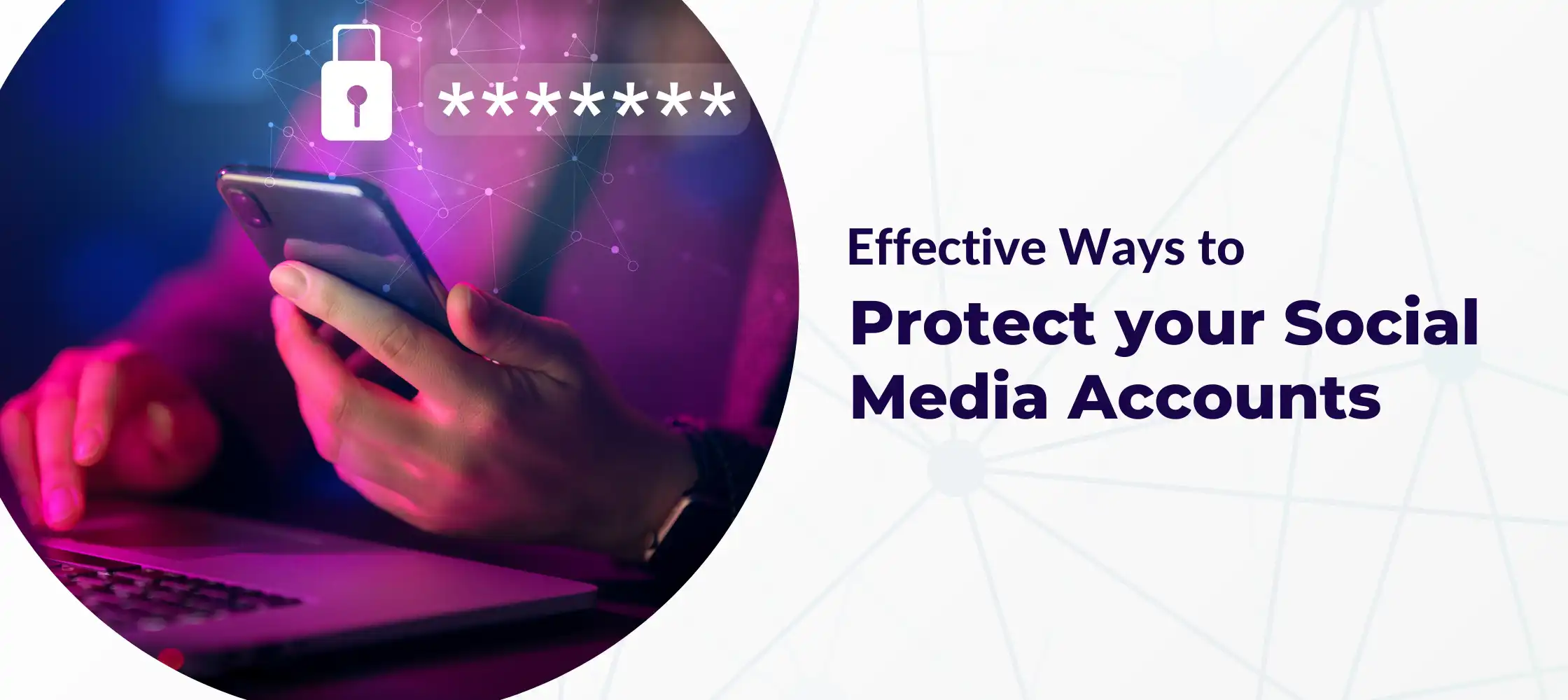Social media is now a permanent part of marketing strategies, and it brings challenging and dynamic security risks for both individuals and organizations, as well as their employees, collaborators, and customers. With an estimated cyberattack occurring every 44 seconds in the United States alone, social media security must be taken seriously to reduce costly impacts like reputational damage, personal information breaches, and legal issues, to name a few.
In this article, we’ll take a look at the most common types of online threats and then arm you with the best ways to keep you and your business safe on social media.
The Most Common Threats on Social Media
Social media threats can come in many forms and put your personal and business-sensitive information at risk. The most common threats range from phishing attacks, scams, identity theft, and impersonation to malware, ransomware, vulnerable third-party apps, and password theft.
Phishing attacks and scams
Phishing is one of the most common causes of data breaches. This fraudulent practice includes fake social media ads, emails, and messages with winning prizes, promotions, or even account issues, being sent out pretending to be reputable and well-known companies or individuals. Scammers create convincing emails and message tactics to entice you to share sensitive information, such as passwords, email addresses, and banking information.
Impersonation and identity theft
Impersonation is a frequent means for cybercriminals to con individuals, organizations, their customers, employees, or prospective hires to hand over sensitive information and credentials. Impersonators and impostors pretend to be another person, influencer, celebrity, or brand by creating fake accounts that can be convincing and hard to differentiate from legitimate accounts.
Malware and Ransomware
Malware is software used by hackers to gain access to IT systems to steal data from individuals and organizations, disrupt their systems, or cause substantial damage. On the other hand, ransomware is malware designed to restrict access and hold systems or data captive until a ransom is paid by the user or organization.
Vulnerable third-party apps
Malicious individuals might exploit vulnerable third-party apps to gain access to sensitive data. These vulnerabilities can include design failure, security breaches, weak authentication systems, or even configuration errors. They are brought to individuals and organizations by external applications used by employees, collaborators, or any other individual who already has access to privileged data.
Password theft
Credential theft is the first step to gaining access to your accounts. From there, hackers can reset passwords, download sensitive data, and access an organization’s or individual’s server. Quizzes and challenges are a common method for cybercriminals to gather information and personal details about preferences and interests that individuals commonly use to create passwords or use as answers to security and forgotten password questions.
How to Protect Your Personal Information on Social Media
Personal information can be protected by following our simple guidelines for social media, which include using strong passwords, enabling two-factor authentication, recognizing scams, and reviewing privacy settings.
1) Using strong and unique passwords
Strong and unique passwords are sometimes the only defense from hackers. Long, unique, and complex passwords with both special characters and numbers are harder to crack for malicious individuals. A solid password should include at least 12 to 16 characters, never include easy-to-find information about yourself or your organization, and never be reused. Secure password managers can streamline the tracking process of all those hard-to-remember passwords in a secure and safe place.
2) Enable two-factor authentication
Two-factor authentication is an extra layer of security to protect your account from potential social media threats, as it sends a one-time code that is valid for just a few minutes. This double layer is reliable to secure your credentials, as, without the approval of the second-factor authentication, your password alone becomes useless to hackers.
3) Reviewing privacy settings
Social network’s default privacy settings might not fit your desired level of security. Organizations and individuals can highly benefit from reviewing them, as 45% of users are not aware of their platform’s privacy settings, making them more vulnerable to hackers.
4) Limiting sharing of personal information
Social media content can be saved and shared again, as other users can take screenshots and share them indefinitely. Personal information and whereabouts, such as live location, daily routine, personal credentials, phone numbers, and email addresses, present safety issues and should not be part of your online footprint.
5) Verify friend requests and direct messages
Connections request approval should be done with a mindful and critical mindset. As an individual, you should stay away from users you don’t recognize or know, as they might be hackers in disguise. A separate private account must be created to separate your public persona from your personal one to ensure a higher level of security and safety.
6) Recognize scams and fraudulent links
Hackers get more and more creative to try to trick you into sharing personal information or clicking on fraudulent links. Spelling errors in email and sender names, as well as email addresses, can help you spot a fake account or potential scamming attempt. In case of doubt, do not click any suspicious links or reply. Instead, log in directly to your social media account to check and resolve the potential issue.
7) Be wary of public Wi-Fi
Public Wi-Fi is not a safe secure connection, as it is easy for hackers to intercept your connection and collect your data. A VPN is a great option to protect your social media from hackers in public environments by making your data, location, and login credentials untraceable.
8) Regularly update software and applications
Updates are key to making sure your computer, software, and social media applications are up to date in terms of security and protection. This step will limit the security risks as up-to-date software has stronger codes and fewer bugs and vulnerabilities for hackers to take advantage of.
Protecting Your Business on Social Media
Just as the list above details how to protect your personal information, there are specific ways to keep your business safe and free from threat.
9) Creating a social media policy
Detailing guidelines with social media best practices is a great way to protect your business from potential threats. Your social media policy can include guidelines around personal social media use on business tools, strong password management, and how and where to report concerning or potential threats before they become an issue for your organization.
10) Implementing restrictions and permissions
Organizations can limit who has access to social media credentials and sensitive information to reduce unintentional breaches by putting someone in charge of password management, permission, monitoring, and publishing access. Password management tools can be useful to manage and restrict access.
Restrictions are particularly important for brands working in pharmacovigilance, as they need to ensure patient protection and safety on how data is secure and managed.
11) Train your staff on social media security awareness
Regular training helps refresh your team’s awareness of social media security best practices. It is also a great opportunity to respond to questions, open two-way conversations, and give them all the tools they need to complete their work safely.
12) Require two-factor authentication
Two-factor authentication adds an extra layer of security to protect your organization from malicious individuals. Meta-paid verification is a great tool to protect your brand accounts against scams and impersonation.
Stay Safe in a Digital Word
Hackers are creative and will persist in finding a way into your social media accounts and app vulnerabilities. The 12 steps above are crucial to protecting your personal and business information and privacy across social media.
Learn more about how to make sure you’re protected on social media by scheduling a call with us today.

